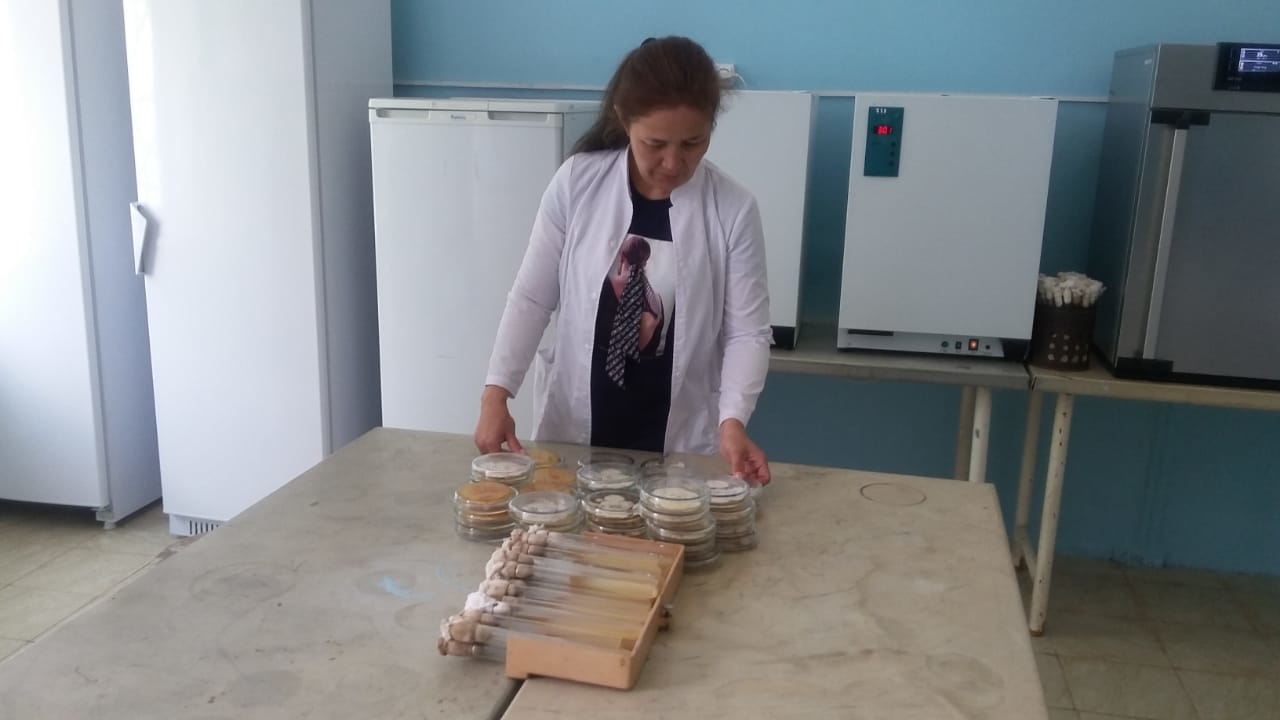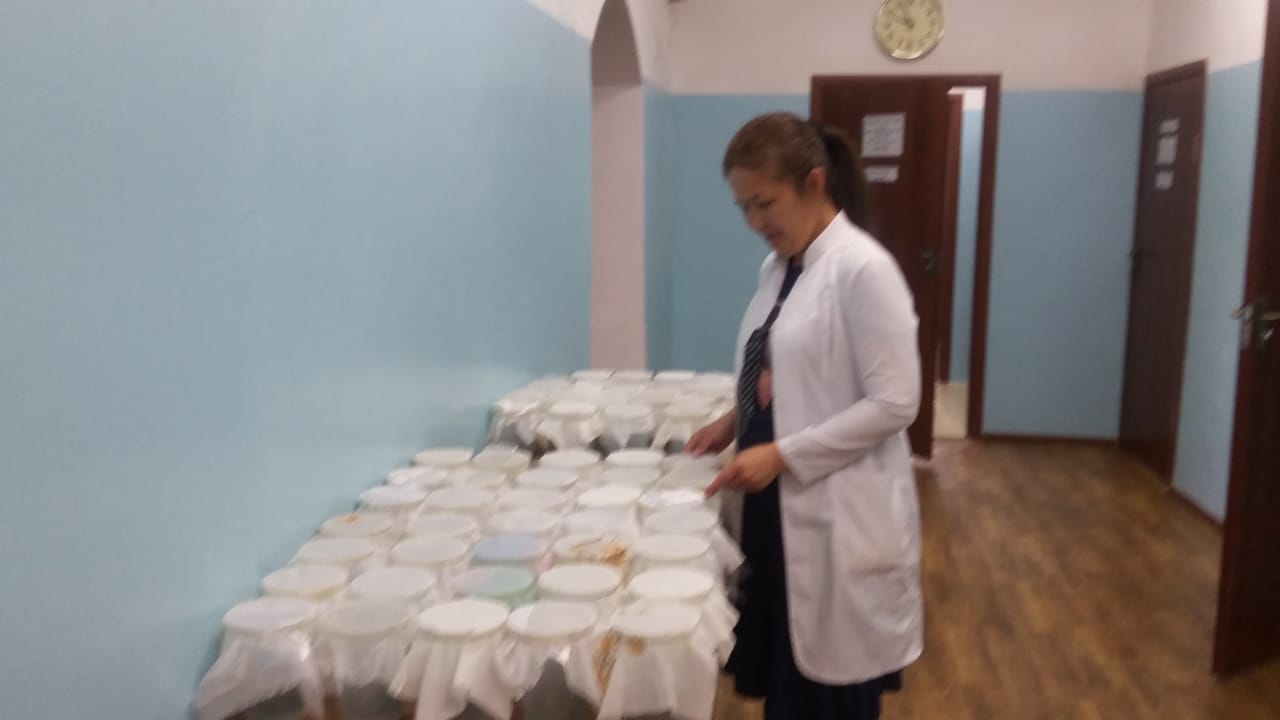
Scientists of subsidiary of the “National Agrarian Science and Educational Center” JSC – “Zh. Zhiyembayev Kazakh Research Institute for Plant Protection and Quarantine” LLP talked about the importance and effectiveness of the use of biological products based on entomopathogenic fungi and bacteria to control the number of agricultural pests.
During the online seminar, the acting head of the biotechnology laboratory of KazRIPPQ, candidate of agricultural sciences - Sarsenbayeva Gaziza Bazarbayevna said that the scientists of the institute created the first domestic biological product “Ak kobelek” based on the bacterium Bacillus thuringiensis var. Kurstaki and a bacterial drug (k-Ym07 / KB) under the “Larvibact” trademark, which surpasses the previous one in a number of technological indicators.
During the speech, the speaker noted that microbial preparations based on various types of microorganisms and metabolites that they synthesize are widely used to protect plants from pests and diseases. Many entomopathogenic microorganisms have a significant aftereffect: a decrease in the fertility of insects and a further weakening of their viability.
The use of biological drugs for plant protection is also safe because the number of microorganisms is self-regulated, reduced, and the population of phytophages or pathogens, as well as natural microorganisms, decreases. The production of biological products consists in the reproduction under artificial conditions of the most highly active microorganisms isolated from the environment and the creation of conditions for their life. It will take 5-10 years to create one biological product for commercial production. Moreover, it must meet the requirements, i.e. to be highly virulent, highly productive. If it does not meet at least one requirement, then it is simply not produced.
The scientists of the institute, in close cooperation with their Russian colleagues, carried out joint work aimed at mass replenishment of the collection of entomopathogenic microorganisms. At the same time, collection funds are constantly replenished with new isolates from various natural and climatic zones of Kazakhstan and adjacent territories. The creation of extensive collections has made significant progress in matters related to the development of new biological insecticides.
The institute’s employees created and included in the “List of pesticides (pesticides) approved for use in the Republic of Kazakhstan” the first domestic biological product, “Ak kobelek”, based on strain 2127-3k of the bacterium Bacillus thuringiensis var. kurstaki. The biological effectiveness of this product is 80-100%. It is used against more than 40 species of Lepidoptera.
Intensive work was also carried out to create new mycoinsecticides (Mikolar - M, Mikolar - B) based on entomopathogenic fungi against harmful locusts.
A bacterial drug (k-Ym07 / KB) was also created under the “Larvibact” trademark, which surpasses the previous one in a number of technological indicators. It was developed on the basis of an indigenous strain of bacteria; for some lepidoptera caterpillars it is quite virulent.
We recommend the biological product Aktarofit against a complex of pests, which is produced in Ukraine. When carrying out treatments with biological products on wood crops, we obtained a biological efficiency of 90%.

In the laboratory of biotechnology LLP "Zh.Zhimbaev KazRIPPQ” a number of studies are carried out:
- Registration and production testing of biological products against crop pests.
- species identification of strains of entomopathogenic microorganisms is determined;
- biological activity (LK50, LT50, LD50) of strains of microorganisms and biological products in laboratory and field conditions against pests of crops and forest plantations;
- quality assessment of foreign and domestic biological products.
- Providing advice to farmers on the use of biological products for the protection of crops, forests and services responsible for the state of green spaces in settlements.



